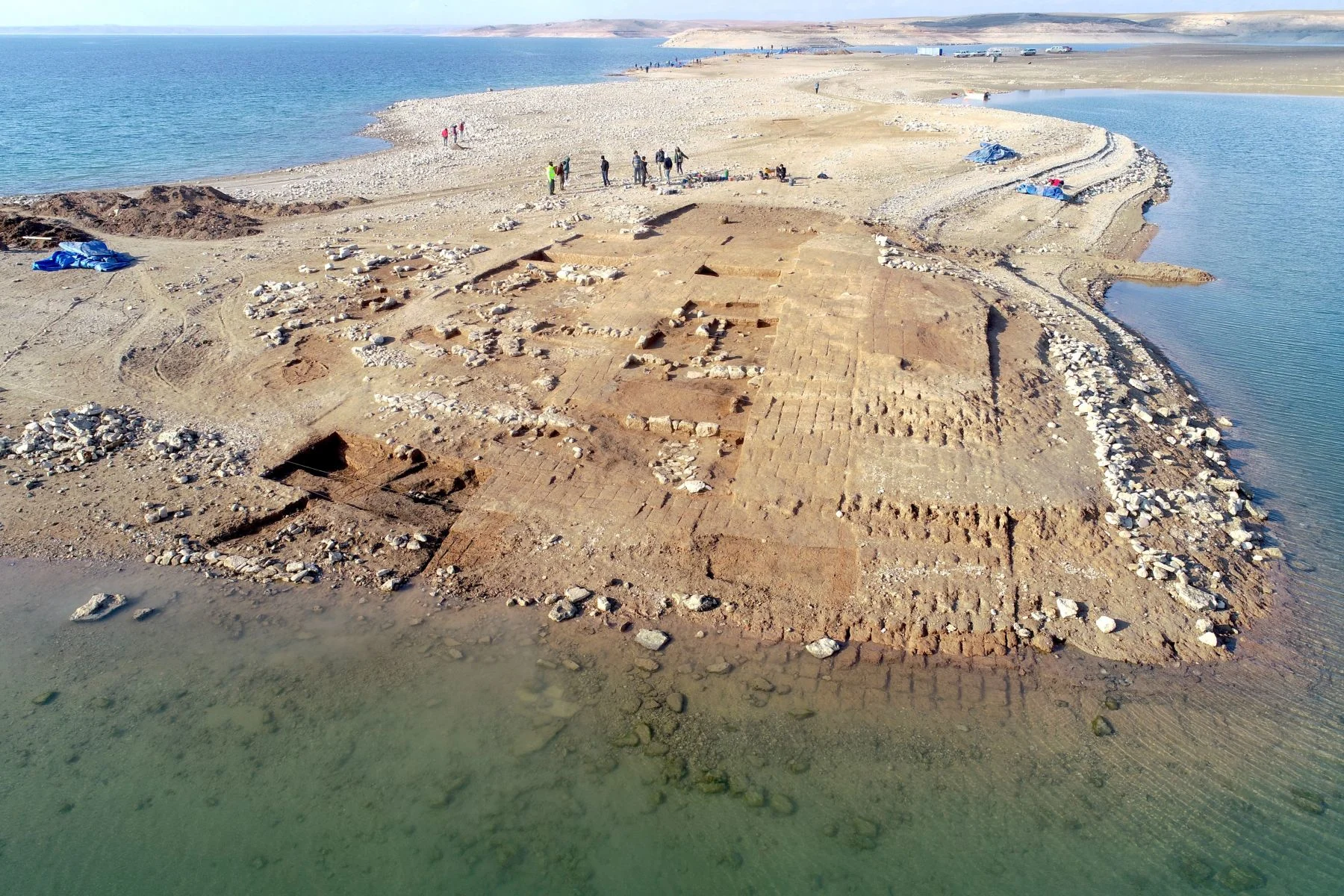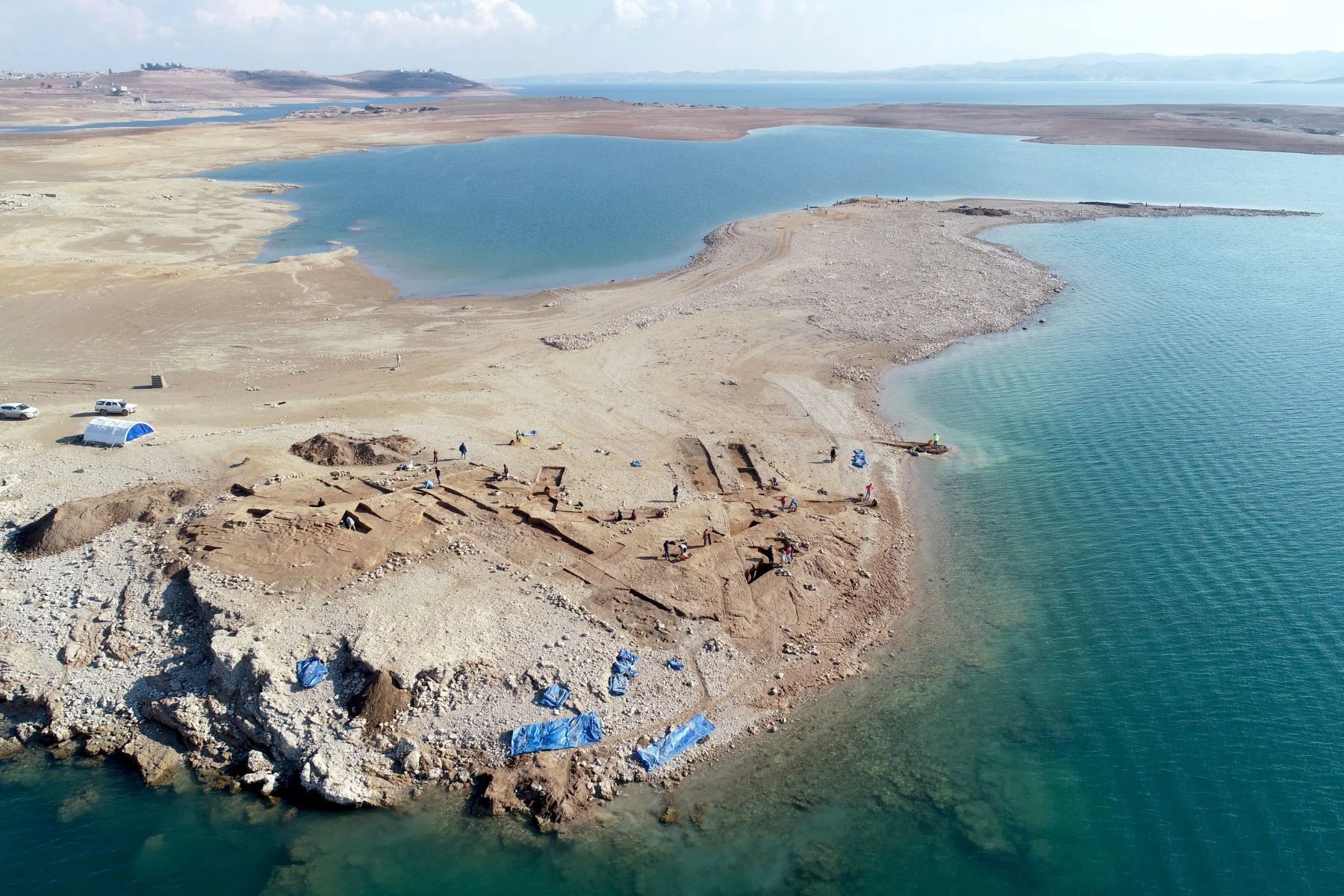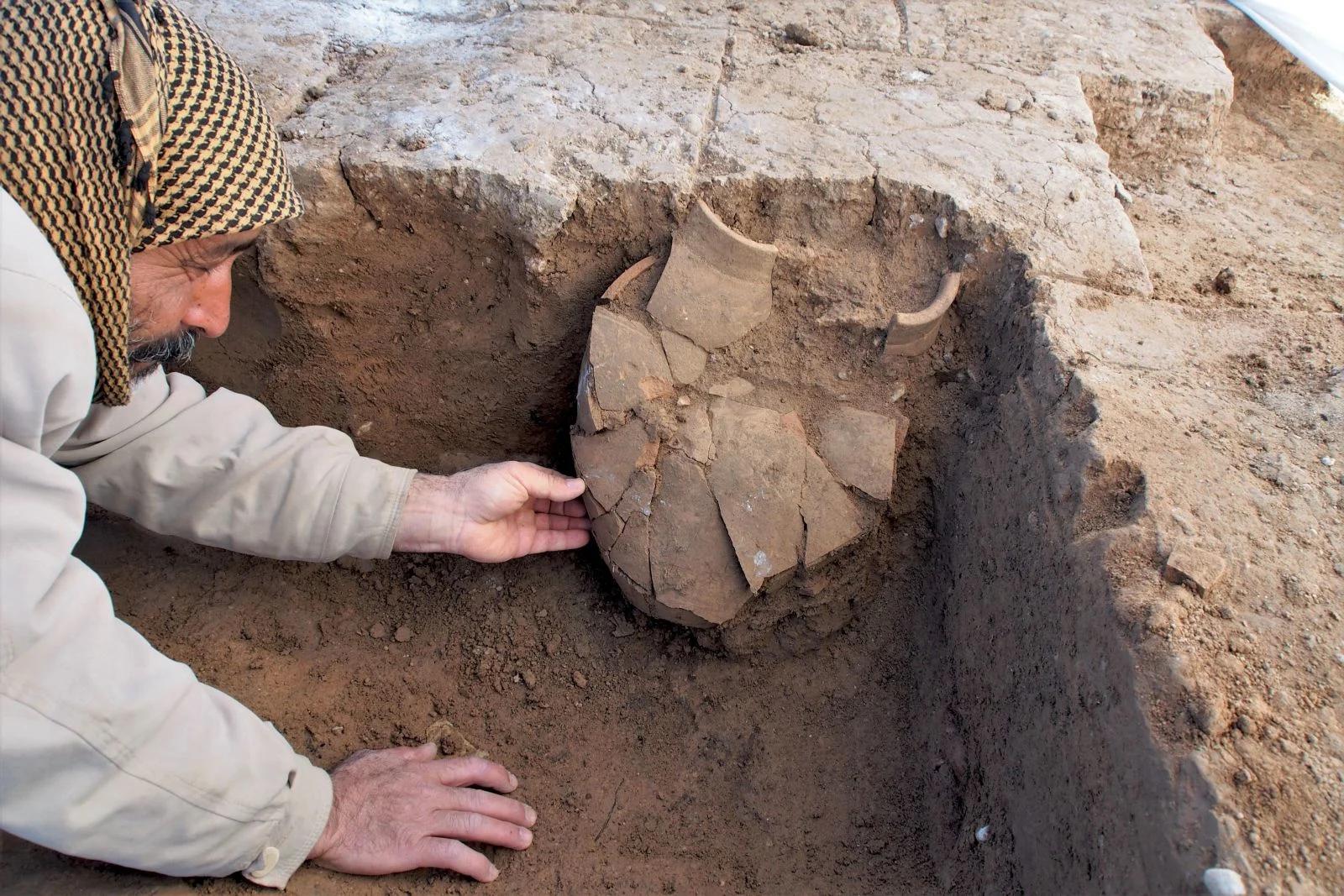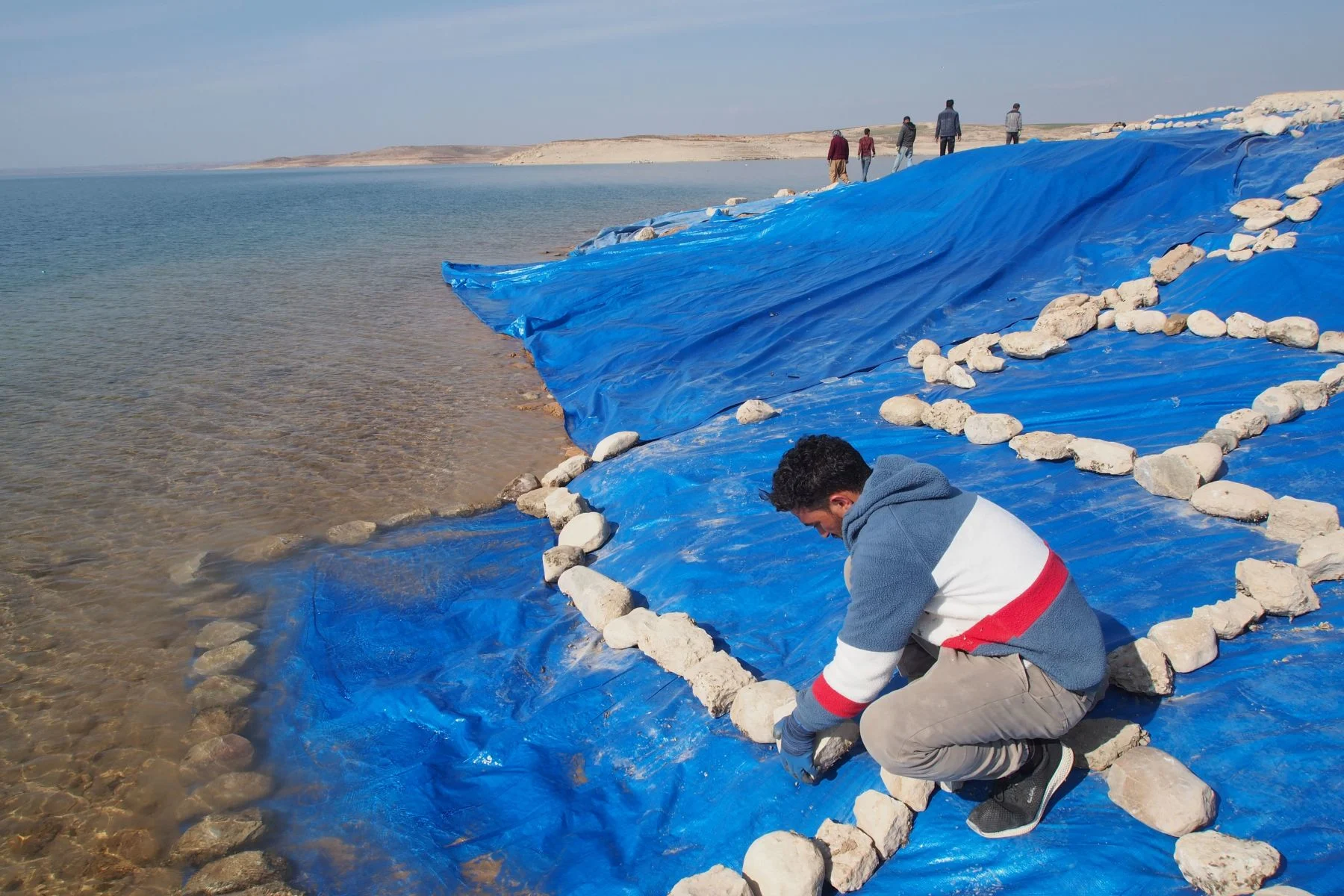
3,400-year-old city emerges in Iraq reservoir during extreme drought
Drought and water shortages could impact millions in Iraq as the climate changes.
A 3,400-year-old city was uncovered by a team of researchers in the Tigris River, Iraq due to extreme drought wiping out the water that was once there.
The palace and several large buildings that were discovered could be Zakhiku, which was an important city in the Mittani Empire from 1550 to 1350 BC.

The archaeological site of Kemune in the dried-up area of the Mosul reservoir. (Universities of Freiburg and Tübingen, KAO)
In a press release, the researchers stated that rising global temperatures and changing precipitation patterns with less rainfall are factors that have made Iraq “one of the countries in the world most affected by climate change.”
“Amid rising population and the climate crisis, water scarcity in Iraq threatens to worsen conflict, food insecurity, health conditions, and economic instability,” stated Wasana Punyasena, Iraq deputy country director for Mercy Corps, to The Lancet in October 2021.
“The loss of access to water from the river and drought threaten at least seven million people in Iraq,” added Punyasena.
Agriculture is one of Iraq’s largest economic sectors and since December 2021, immense quantities of water have been pumped out of the Mosul reservoir to protect crops from the drought. The high demand for water caused the reservoir to dry out enough for the hidden city to be revealed in the nearby Tigris River.
This is not the first time that the ancient city has made an appearance – archaeologists began excavating the site in late 2018 when water levels in the reservoir receded during a severe drought.

One of the vessels with tablets is inspected before being recovered. (Universities of Freiburg and Tübingen, KAO)
The researchers stated that the extent of the reservoir drying in 2022 was “an unforeseen event” and put sudden pressure on archeologists to document as much of the city as they could before water levels replenished.
The recent excavations took place in January and February 2022 and their discoveries include an extensive urban complex with walls and towers made of sun-dried mud that had been underwater for 40 years.
Pottery containing inscribed clay tablets was also found and the researchers hope that they will provide information about the end of the ancient city and the rise of Assyria.

After the research team has completed their work, the excavation is covered extensively with plastic foil to protect it from the rising waters of the Mosul reservoir. (Universities of Freiburg and Tübingen, KAO)
According to the press release, the site is once again underwater. Tight-fitting plastic sheeting and gravel were used to cover the excavated buildings to conserve this part of the Mittani Empire for future research.
Thumbnail image: Aerial view of the excavations at Kemune with Bronze Age architecture partly submerged in the lake. (Universities of Freiburg and Tübingen, KAO)












